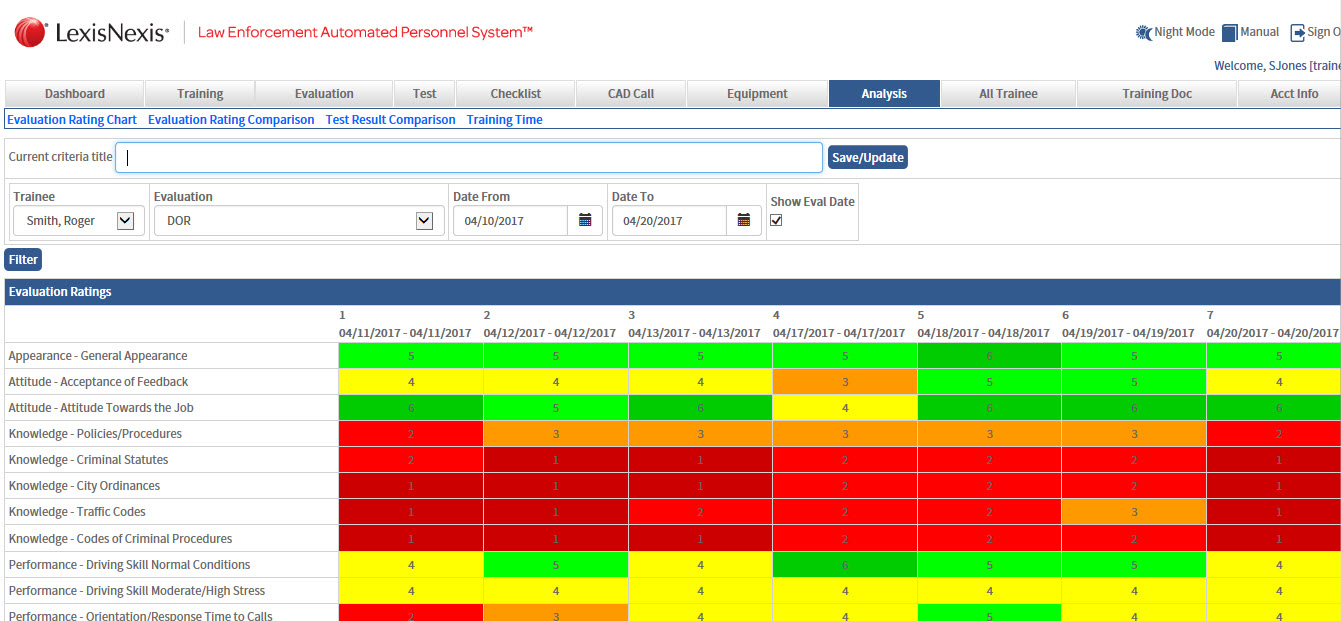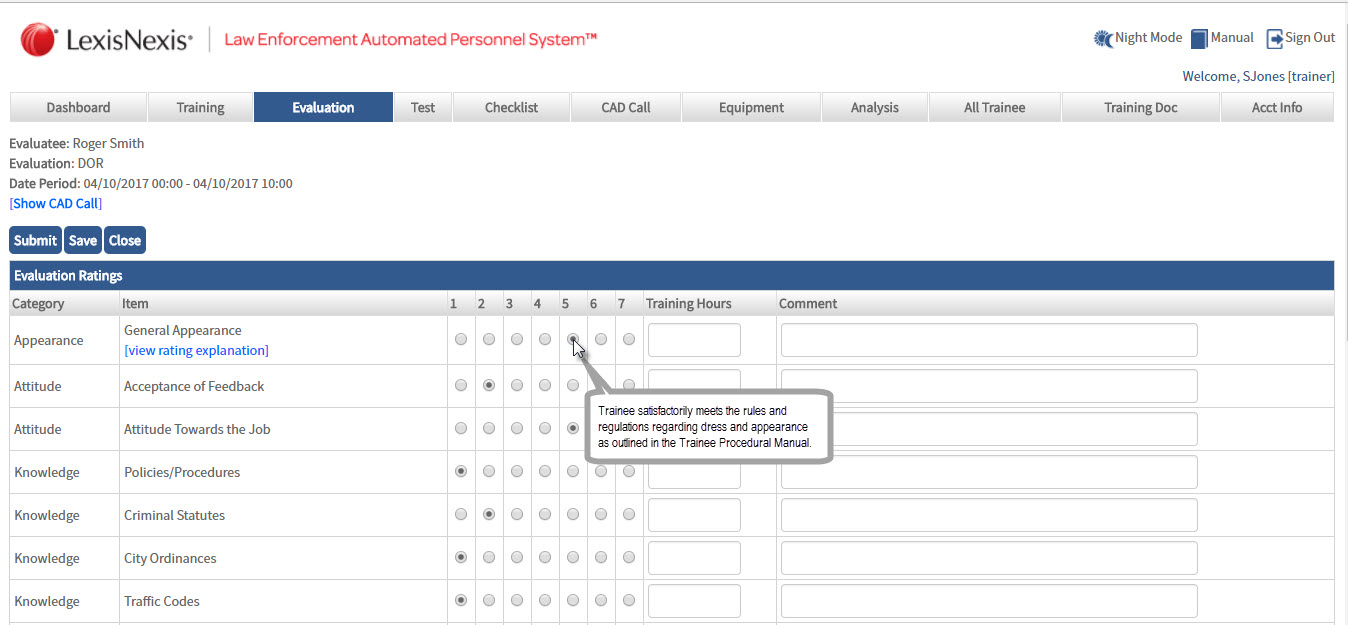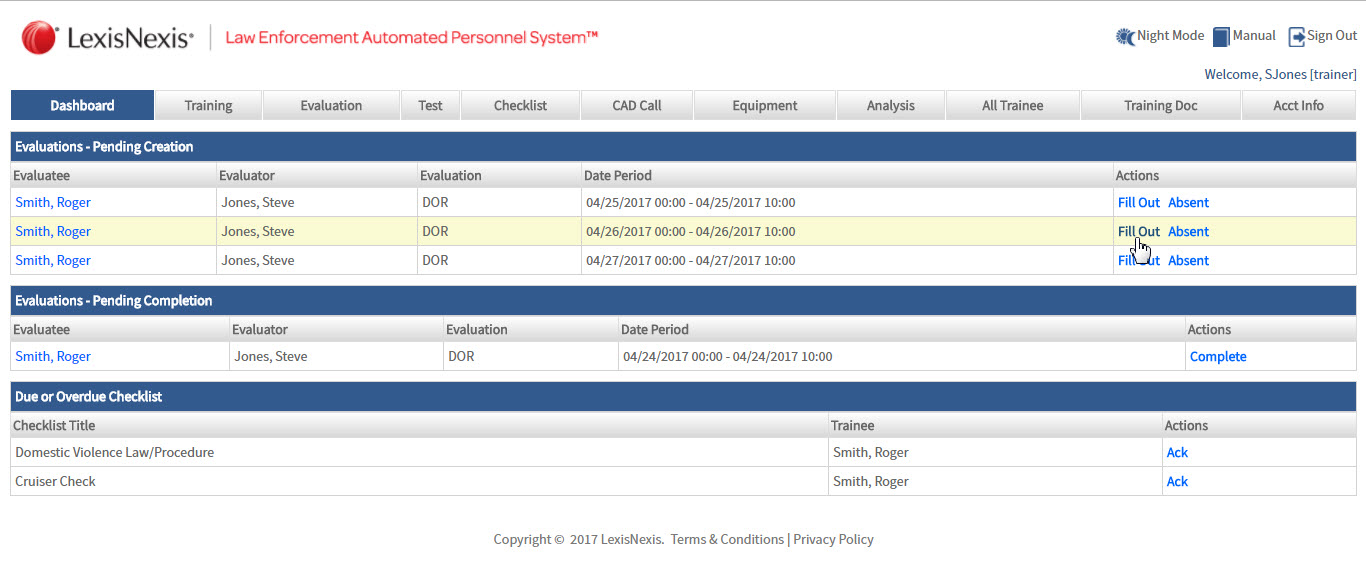U.S. law enforcement officers are among the best trained in the world, but some antiquated systems and methods being utilized today to conduct and document law enforcement training threaten that standing.
Law enforcement in the United States is constantly evolving, requiring continuous, career-long training to keep officers better prepared to stay safe and serve their communities. To that end, a new generation of training management technologies has emerged that automates internal training and human resource processes so that federal, state, and local law enforcement agencies can dramatically streamline their training practices.
Not only do the new technologies help save time and money by automating the tracking of officer training, but they also enhance an agency’s ability to be more accountable, transparent, and compliant. The technologies can also accelerate the training process and, thus, a recruit’s ability to start working in the field.
The Paper Problem
One of the key challenges in managing a field training program is that it has been a paper-based process, reliant on unwieldy three-ring binders, stacks of paper, and file cabinets full of forms. Managing this paper-based process is an unnecessarily burdensome and inefficient endeavor for a law enforcement agency operating in the 21st century.
Accountability is the first casualty of manual training processes. How to hold law enforcement officers and agencies accountable to the communities they serve has been a constant source of contention that has become even more acute in this post-9/11, politically charged world. Officer training is often held as the primary touchstone by which agencies promise to fulfill their commitment to serve the community equally and justly.
The difficulty in providing reliable, granular data on training as it applies to officer behavior has been a major obstacle to validating this commitment. Too often, documentation associated with officer training gets lost, damaged, or incorrectly updated. Forms and instructions get torn out from binders. Agencies are unable to determine if a new trainee has reviewed the materials and completed the requirements or if the trainee even has the materials he or she needs. An individual officer involved in a controversial policing encounter and facing public scrutiny might resort to criticizing his or her lack of training as a defense. As a result, documenting and providing training records publicly can become challenging, feeding community distrust and even prompting lawsuits.
Paper-based approaches also prevent agencies from spotting problems with a trainee in time to intervene and correct the issue. A new recruit may be doing extraordinarily well meeting all of his or her training requirements except for scoring low on, say, use-of-force training. The current method of manual tracking and analyzing to monitor trainee progress makes it difficult to address training problems proactively. Without going through every single evaluation report about a particular recruit on an ongoing basis, those trouble areas are able to perpetuate unnoticed.

Because the law enforcement environment is continuously changing, manual training processes impede agencies’ abilities to meet the requirements of new laws and community initiatives as well. For example, states such as New Jersey and Minnesota, along with major urban cities like Chicago, Illinois, are implementing new laws that require law enforcement officers to obtain new violence de-escalation, mental health response, and implicit bias training.1 Some law enforcement agencies are taking advantage of Federal Emergency Management Agency (FEMA) grants to train officers in National Incident Management System (NIMS) certification for better emergency preparedness and response.2 Other agencies are increasing requirements in Spanish training requirements to give officers practical language skills such as arrest, command, and control expressions; traffic-enforcement expressions, gathering of field information; and precautionary and danger word recognition.
Many conventional policing equipment and tactics—such as using OC spray, batons, Tasers, and firearms—require frequent re-training and re-certification of officers. In addition, there is the constant innovation of new policing technologies to contend with, from body-worn cameras to surveillance drones to DNA evidence collection technologies, all of which come with myriad skills, policies, and procedures to master.
Also, from a human resources perspective, manual training methods can exacerbate an agency’s risk associated with negligent retention and wrongful termination of a recruit.
Streamlining Training While Maintaining Accountability
New developments in data analytics, reporting, and cloud-based computing technologies are helping law enforcement agencies emerge from the dark ages of training. Some of these new products were developed in conjunction with law enforcement agencies to ensure they meet the most pressing real-world needs of the police community.
At the very least, law enforcement agencies will gain a force multiplier effect by their ability to do more with less. Automated systems can streamline outdated internal training and employee processes while stretching agencies’ training budgets further. Notifications, analytical tools, summary reports, and archived record retrieval systems provide immediate access to critical information and help to ensure accountability.
The tools also enable command staff and training administrators to maintain ongoing compliance through the efficiencies of digital documentation and record retrieval. Automating collection and reporting of training data for every recruit can ensure agency-wide compliance with mandatory certifications, re-certifications, training assessments, and personnel evaluations. Agency staff can receive alerts when certification renewals are due, and administrators can run real-time reports to instantly identify if there are any lapses. These systems provide records that are more accurate, current, and transparent.
Automated analytics is a critical improvement for performance evaluations, as well as tracking officers’ training progress. Manually analyzing reams of paper records makes monitoring trainee progress challenging, if not impossible. These new solutions feature easy-to-use analytical tools and built-in automated notifications to help spot training problems, help trainers stay on task, and enable administrators to monitor trainee progress. Should an otherwise promising trainee score low in a particular area of training, agencies can immediately take steps to rectify the specific problem.

Automated systems may also lead to faster onboarding of new recruits. The efficiencies of digital records enable new trainees to accelerate fulfillment of their training requirements, while command staff and training administrators can more closely monitor and manage recruit progress, intervening earlier and more quickly when remedial action is required. The technologies also ensure that new trainees have instant access to all the critical documentation they need to succeed, as well as the capability to track their own progress throughout the training program, thus reducing angst about their progression in the training program.
Automated training systems can be effective in mitigating risks associated with wrongful termination and negligent retention. If a recruit is terminated for not responding sufficiently to training or demonstrates a lack of ability to handle the job, the data become virtually indispensable in helping to mitigate unwarranted claims. Digital documentation, archived records, notifications, and reports provide an accurate, defensible, unbiased “version of the truth” about what that officer actually achieved in his or her training regimen. The systems can show what programs the recruit was trained on, how he or she was trained, how often, and how well he or she performed. They can also provide important records of all the steps the agency took to help the recruit overcome his or her obstacles.
Automation is essential in keeping agencies current in a fast-changing regulatory environment. There will always be new laws to comply with; new policies and procedures to enforce; new technologies to master; and, most important, new threats to the public to combat.
Intelligence-Led Training and Management
Intelligence-led policing is another trend driving the need to modernize training. This approach is changing the way law enforcement administrators manage their patrol and specialized units, making their departments more effective at handling existing and potential issues in their communities. Using data analytics gleaned from the information in computer-aided dispatch (CAD) and records management systems (RMS), administrators can make better decisions about where to deploy units, how to manage shift rotations, how many units to send to specific calls for service, and much more. Intelligence-led training is the next evolution of field training programs, thanks to law enforcement agencies’ acceptance of automated training systems.
The goal of any law enforcement trainer, whether class based or field based, is to shape trainees into officers who will be successful in carrying out their duties. Automated training tools can yield a more effective training program. At the trainee level, analytics derived from daily observation report data can be used by second phase, third phase, and remedial phase field training officers (FTOs) to identify specific areas where additional attention needs to be focused. This helps trainees focus on what they need to know, rather than become frustrated by retraining in topics in which they already hold a high proficiency, while neglecting weaker areas in their training. At an administrative level, the new analytic capabilities can help identify areas where additional in-house training might be required to supplement academy training due to performance issues demonstrated by many recruits in their first phase of the field training program.

For command and supervisory staff, there are tremendous applications and benefits to the analytics that can be pulled from performance evaluations in an automated system. Administrators can access overall performance trends and even view the impact an officer has on his or her peers. The analytics can also help to identify trainers who might be struggling with training recruits in particular areas.
Intelligence-led training will help a program become more effective, yield better officers, and assist leaders to make informed training and management decisions.
What to Look For
Any degree of automation and digitization of traditional paper-based training management will be a significant improvement for law enforcement agencies. Still, certain features and capabilities impact a solution’s affordability, ease of use, performance, and privacy protection obligations.
Some solutions are designed to handle just initial training requirements of recruits. They lack the monitoring, reporting, and automated alerting capabilities needed for ongoing training and re-certification, which could be a significant risk liability for agencies.
Many automated training solutions are now available as cloud-based systems that are easily accessible on any Internet-connected device through an easy-to-use CAD interface. Software-as-a-service (SaaS) training solutions are ideal for agencies with tight budgets and strained internal information technology resources.
Nevertheless, hosting the storage of those data in the cloud might be too much for some agencies to be comfortable with. When choosing a cloud-based system, agencies should look for providers who offer the flexibility of hosting the data internally or in the cloud. Images and video (whether from in-car or officer-worn cameras) are fast becoming a norm in documenting trainee performance; often, these files can quickly consume a large amount of storage space.
If cloud-based hosting is the choice, agencies need to account for security. Law enforcement training data aren’t just “data;” they are highly sensitive personnel information and, occasionally, even legal evidence. Individual privacy rights must be protected.
Some vendors utilize shared servers and network infrastructures from third-party providers to host agency data, which can present numerous security vulnerabilities. Agencies need to choose a cloud solution provider that hosts the data on dedicated servers within their own secure data centers that are managed by highly trained data security specialists. Some security credentials to seek out include centers that are Tier 3 certified with SSAE-16, ISO 27001/14001/9001, and SOC 2 certified controls.
Agencies also need to ensure for proper credentialing from their solutions providers. Access to data must be carefully controlled by internal users, as well as be granted only to legitimate data managers within the provider’s organization.
Configurability is important too. Agencies should look for systems that are easy to configure using their current forms, scoring criteria, tests, permissions, checklists, and other needs and that track and maintain the historical documents and legacy evaluations. Having to overhaul an existing training program that has served the agency well solely because the technology requires a new way of doing things is a hassle that can be avoided.
Final Thoughts
Law enforcement agencies can no longer keep pace with the ever-increasing changes in new laws, technologies, public threats, and community expectations by relying on paper-based training methods to keep their officers at their best. New automated field training and employee training compliance systems not only streamline internal training processes, but also make it easier to meet local, state, and federal compliance standards while minimizing agency liability.
These capabilities are critical for enhancing accountability and transparency within agencies so that they can continue to build community trust and deliver world-class customer service. Law enforcement officers need new technologies and a new commitment of support to keep them among the best trained forces in the world.
Notes:
1Cathy Wurzer and Curtis Gilbert, “New Law Will Require Police To Complete New Training,” MPRNews, June 29, 2017; State of New Jersey, Department of Law & Public Safety, “Attorney General Porrino Announces New Police training Institute and Continuing Education Policy to Help New Jersey Officers Enhance Police-Community Relations and void Deadly Encounters,” news release, October 6, 2016.
2Randall Hanifen, “Why NIMS Continuing Education Is Needed,” Domestic Preparedness Journal 13, no. 6 (June 2017): 12–14; Federal Emergency Management Agency, “National Incident Management System,” updated October 17, 2017.



